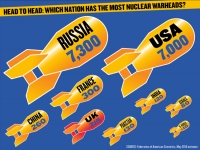“It gets Missouri and MDOT prepared for 21st century innovations,” enthused Tom Blair, who heads the Road to Tomorrow initiative, in the Kansas City Star, adding, “We expect them to be in place, I’m hoping, by the end of this year, maybe before snow flies.”
Combining road improvement with solar energy generation could be not only a boon for the state, but a model for others across the U.S.
Of Solar Roadways, Blair explained, “If their version of the future is realistic, if we can make that happen, then roadways can begin paying for themselves.”
According to the Star, MDOT would like the Route 66 Welcome Center in Conway to receive the first solar makeover — and the project could pique interest, Blair noted, by “bringing history and the future together.”
Solar Roadways describes their tempered-glass roads as “a modular system of specially engineered solar panels that can be walked and driven upon. Our panels contain LED lights to create lines and signage without paint [and] contain heating elements to prevent snow and ice accumulation.”
Better still, this is an ‘intelligent’ system in which microprocessors allow the panels communicate with each other and a central control operating center — as well as with vehicles. Being modular, the roads could easily be repaired when necessary without having to rework entire sections, which can disrupt traffic for months, if not years.
Though part of the initiative could be funded by grants and private entities, Blair explained they will be crowdsourcing, as well:
“We are going to go out there publicly and on the internet … and ask for money to make our solar roadway pilot project even bigger and better.”
As Solar Roadways — which is also crowd-funded through Indiegogo — explained, they have already completed two contracts in partnership with the U.S. Department of Transportation.“Our goal is to modernize the infrastructure with modular, intelligent panels, while producing clean renewable energy for homes and businesses,” the company’s website states. “We’ll be able to charge electric vehicles with clean energy from the sun, first on our solar parking lots and when we have enough highway infrastructure, while driving.”
A similar project in the Netherlands was more successful than proponents and detractors imagined — a 70-meter (229.6 feet) section of bike path tested generated enough electricity in six months to power a single-family home for an entire year.
As The Free Thought Project reported previously, “The applications for this technology are virtually limitless. If all roadways, sidewalks and bike paths were paved in these solar panels, the power needs of the world would quickly become a problem of the past.”
Abandoning the need for paint on such roads offers a number of benefits, as well. Imagine construction zones — when modules do need repair — being routed through the use of LED lights instead of those ubiquitous and much-maligned orange barrels.
The safety potential and energy benefits make such projects a necessity well into the future.
If the project experiences such success in Missouri, solar roads may be the future for many American highways.
Read more at http://thefreethoughtproject.com/missouri-solar-roadways/#Ep2yma7P2QmDfCoj.99


 Imagine going to the polls on Election Day and discovering that your ballot could be collected and reviewed by the
Imagine going to the polls on Election Day and discovering that your ballot could be collected and reviewed by the ACLU Blueprints Offer Vision to Cut US Incarceration Rate in Half by Prioritizing 'People Over Prisons'
ACLU Blueprints Offer Vision to Cut US Incarceration Rate in Half by Prioritizing 'People Over Prisons'  "These disasters drag into the light exactly who is already being thrown away," notes Naomi Klein
"These disasters drag into the light exactly who is already being thrown away," notes Naomi Klein  How about some good news? Kansas Democratic Representative advances bill for Native Peoples.
How about some good news? Kansas Democratic Representative advances bill for Native Peoples.  What mattered was that he showed up — that he put himself in front of the people whose opinions on
What mattered was that he showed up — that he put himself in front of the people whose opinions on On a night of Democratic victories, one of the most significant wins came in Virginia, where the party held onto
On a night of Democratic victories, one of the most significant wins came in Virginia, where the party held onto A seismic political battle that could send shockwaves all the way to the White House was launched last week in
A seismic political battle that could send shockwaves all the way to the White House was launched last week in In an interview with Reuters conducted a month after he took office, Donald Trump asserted that the U.S. had “fallen
In an interview with Reuters conducted a month after he took office, Donald Trump asserted that the U.S. had “fallen Attorney General Jeff Sessions overturned the sweeping criminal charging policy of former attorney general Eric H. Holder Jr. and directed
Attorney General Jeff Sessions overturned the sweeping criminal charging policy of former attorney general Eric H. Holder Jr. and directed